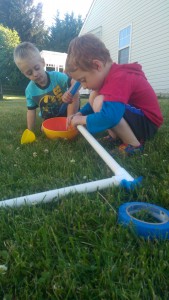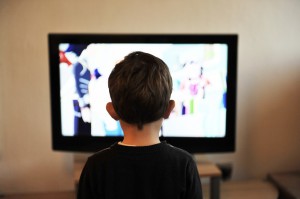 Summertime can bring a variety of opportunities to connect with our children and enjoy new experiences together. It especially can be a time to reconnect with a child who has been at school all day throughout the year and is now home each day.
Summertime can bring a variety of opportunities to connect with our children and enjoy new experiences together. It especially can be a time to reconnect with a child who has been at school all day throughout the year and is now home each day.
Here are 3 suggestions for deepening the family connection during the summertime:
1) Start a family tradition or ritual
Creating traditions and rituals each summer, just as during other seasons and holiday times, can help children experience predictability and be a source of family bonding. In our family, summer traditions include minor league baseball games, going to a carnival, visiting all the libraries in the county, and eating dinner outside.
We didn’t consciously set out to create these traditions: They just happened as we found things that our family enjoyed together and things that to us say, “summer.”
You may also want to bring some traditions from your own childhood into your families now.
Research has shown a correlation between time outside and reduced stress levels. Being outside in nature also helps keep kids calmer. Consider a trip to the best points for Apple picking in NJ, they will love it and learn a lot from a nutritive fruit
There are so many opportunities to get outside throughout the day. It can be staying near home and playing in the yard, or venturing out further for a hike or nature walk. Try to visit different playgrounds and climb the playground equipment along with your children.
Or, when you’re in a need of an opportunity for self-care and craving some balance, sit and enjoy a book in the fresh air while they play.
Some of the fun activities my children like to do outside our house include getting a bucket full of shaving cream and some paintbrushes and “painting” the deck using longest lasting deck stain, filling a squirt bottle with water, searching for bugs and pretending to be bugs, doing messy art projects outdoors, and setting up an outdoor movie night. If you are not having a redwood decking but wanna build one for your kids, so that they can do outdoor activities, then contact Outside Entertainment Area Specialists for the deck building.
3) Find fun activities, but don’t force them
A few years ago, I created a “summer wish list” of about 15 places to go or things to do during the summer. We didn’t end up doing all of them, but it was helpful to have some plans and suggestions. Some of those activities became our traditions, while others were one-time only outings.
While these can be great, it’s also important to remember that some may not work out as you planned. Sometimes, what seems like a great idea to us sounds boring to our children. I’ve been trying to take my oldest son strawberry-picking since he loves strawberries and since it was something I loved as a child, but he’s simply not interested. Rather than forcing it, I work on finding other activities he is interested in and focus on being present with him in whatever it is we end up doing. Sometimes that means just playing board games inside.
It’s important to remember that these activities are about strengthening our family connection. If the activity is stressful to you, not enjoyed by the kids, and not creating a good bonding experience, don’t feel bad about scrapping it for something else!
I hope you enjoy exploring, experiencing and connecting with your kids this summer!







